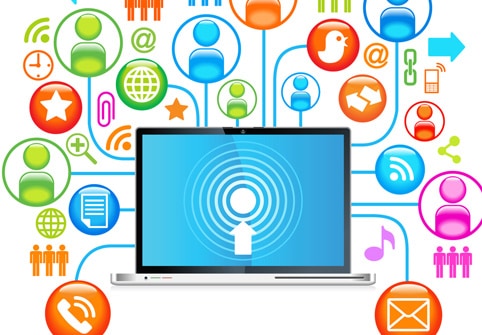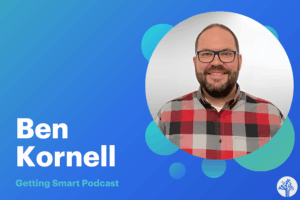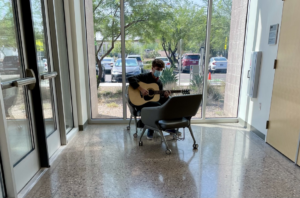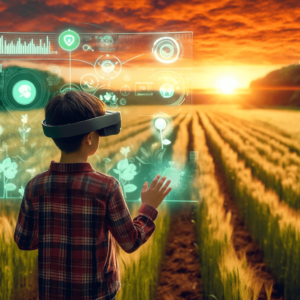How Will the Shift to Digital Learning Happen?

I visited Wireless Generation last week and received so many great questions, I’ve been answering a few a week including this post and this one.
I am familiar with Katie Salen’s work in Quest2Learn (a game-based school in NYC), so when you mentioned that school [in Getting Smart] as a prime example of what future schools might look like, it make me think the following: Quest2Learn is a newly-created school that integrates technology into 21st century learning objectives… but considering that most schools are entrenched in outdated modes of operating, the challenge won’t always be about convincing people that things need to change (they are already desperate for solutions), but how to transition into these changes. Which parts of a school community do you think are the most important in order for schools and districts to reach the necessary tipping point in order to actually START acting upon the demands for 21st century learning?
This is a great question not only about change theory and entry points but a shift in ends and means.
The shift to personal digital learning is profound—it’s not just the shift from print to digital, it’s a shift from cohorts to competency, and from common to customized pathways. It’s a shift from flat and sequential to interactive pedagogies and from a short school day to anytime anywhere learning. (For more see 10 Shifts the Change Everything). Add the Common Core adoption and you have a higher bar of real college and career ready expectations. Add multiple providers and the concept of school-as-a-service and you have a new educational landscape.
In short, this phase change requires state and district leaders to conduct a lot of community conversations that result in phased three year plans that guide decisions and budgets. Digital Learning Now provides a great roadmap for reform for state policy makers.particularly in regards to expanding access and options, moving from time to learning, and funding that encourages innovation and performance. In addition to policy leadership, the shift also requires support for schools and teachers ready to create the future (i.e., a top/down, bottom/up, inside/outside appraoch).
Following are ten change strategies that build on trends and may accelerate the transition to personal digital learning.
- Teachers using free/cheap apps and supplements. Do a quick survey, you may be surprised at how many teachers are using new Web 2.0 learning tools. If 40% of your district teachers are already using a social learning platform like Edmodo, the district can add content and professional learning experiences.
- High school students are blending their own learning. There are more than a million students taking courses online where states and districts make it possible. Leverage this trend by expanding upper division and foreign language options.
- District pilots and innovation zones. School of One started as a summer school pilot, then moved to after school, then to a three school pilots. This no-stakes to low-stakes to limited-stakes pathway is a great example of an urban district supporting innovation. A number of districts are following New York’s lead and creating innovation zones where schools can gain autonomy and join innovative networks.
- Shift to digital instructional materials. Most states will be adopting online assessments in the next three years. That will require states and districts to expand student access. It’s a great opportunity to use the same timeframe to plan the shift to digital instructional materials and to narrow the digital divide by ensuring that every student (and family) have 24/7 access to learning.
- Open Education Resources (OER). The amount, quality, and usability of OER is expanding rapidly from curriculum to productivity tools. The phased shift to digital instructional materials should include a review of relevant OER.
- Bring Your Own Device (BYOD). Here’s 6 reasons education leaders should let kids bring devices to school. After a little work on the safety, security, and equity fronts, BYOD environments can help expand access and extend learning for all students.
- Elementary labs and tabs. The Rocketship network is demonstrating how adaptive software in a learning lab can boost learning and sustainably extend the day. Inexpensive tablets is making it possible for some schools to create the same kind of rotation within individual classrooms.
- STEM. Community interest in science, technology, engineering, and math (STEM) can be leveraged into active approaches to science, new high school academies, and after school programs like FIRST Robotics.
- Blended improvement projects. School models that incorporate online learning are increasingly being used in dropout prevention (e.g., AdvancePath), school improvement, and blended restarts.
- New school development. Even though new schools serve a relatively small number of students, they can be the best and quickest way to create compelling pictures of what is possible for all students. Every urban center in America should have an active new school development strategy that leverages corporate and philanthropic support.
These 10 strategies can be leveraged to accelerate the shift to digital learning. But the question points to “21st century learning.” For many U.S. schools, the new tests that states will be introducing in the next couple years will significantly influence the aims of education. So, while you’re planning the shift, you may want to spend time in your state capital discussing student assessment and the extent to which it, and associated accountability systems, promote 21st century learning.
Disclosure: Edmodo and AdvancePath are portfolio companies of Learn Capital where Tom is a partner.








luis
Computers and tablets are only assistants and a good teacher’s will always be needed.
However social networks such as facebook and YouTube as well as great resources including Wikipedia and Wolfram-Alpha are here to stay so that educators must use them in the teaching process.
Many academics are posting great educational videos and materials online. The only problem is to sort the good ones from the rest and present them in an organized manner.
This effort is being done by: http://Utubersity.com which presents the best educational videos available on YouTube in an organized, easy to find way to watch and learn.
They are classified and tagged in a way that enables people to find these materials more easily and efficiently and not waste time browsing through pages of irrelevant search results.
The website also enhances the experience using other means such as recommending related videos, Wikipedia content and so on. There's also a Spanish version called http://utubersidad.com
This is a project that YouTube should embrace itself, with curated content from academics and maybe using a different URL (Youtubersity?) so it won’t be blocked by schools.